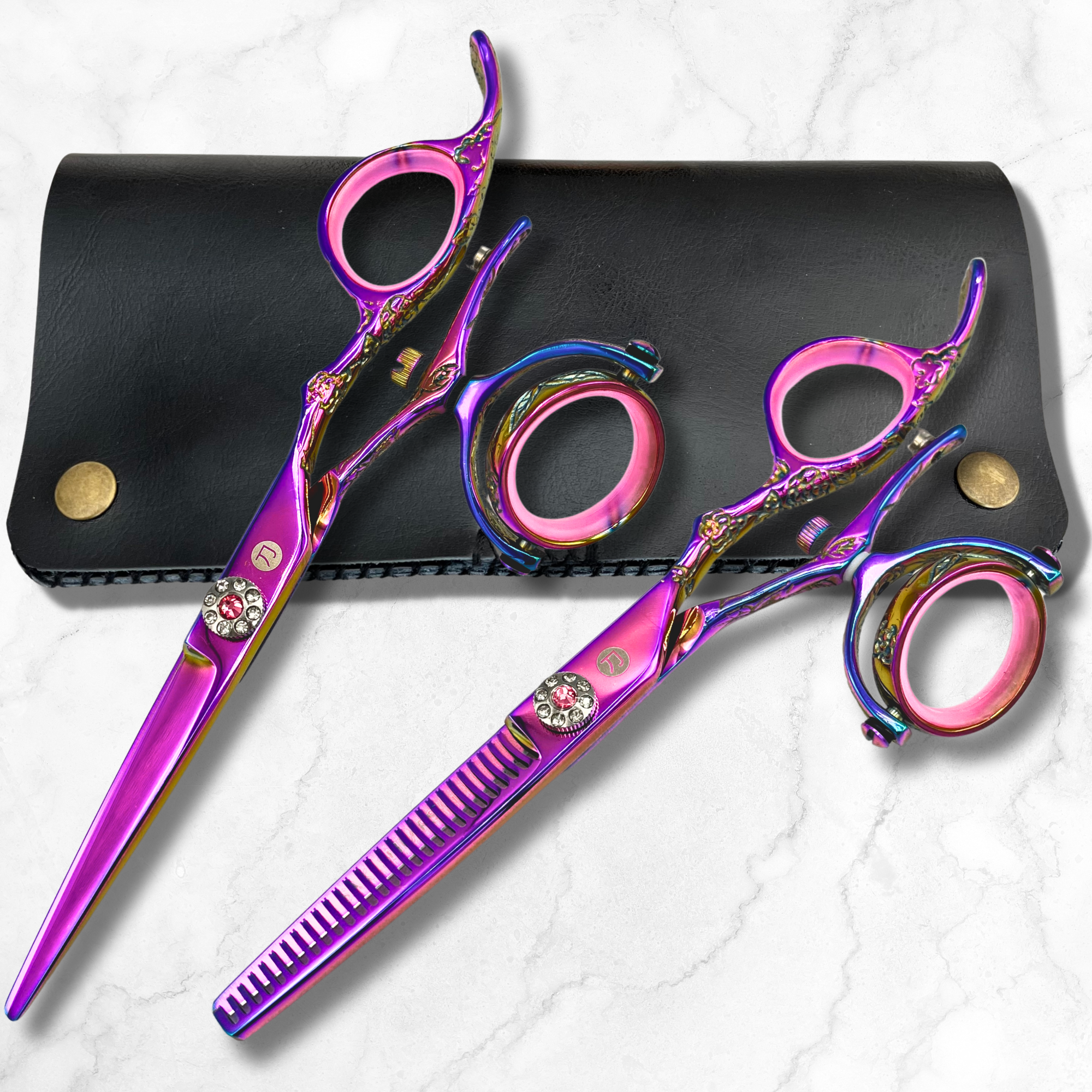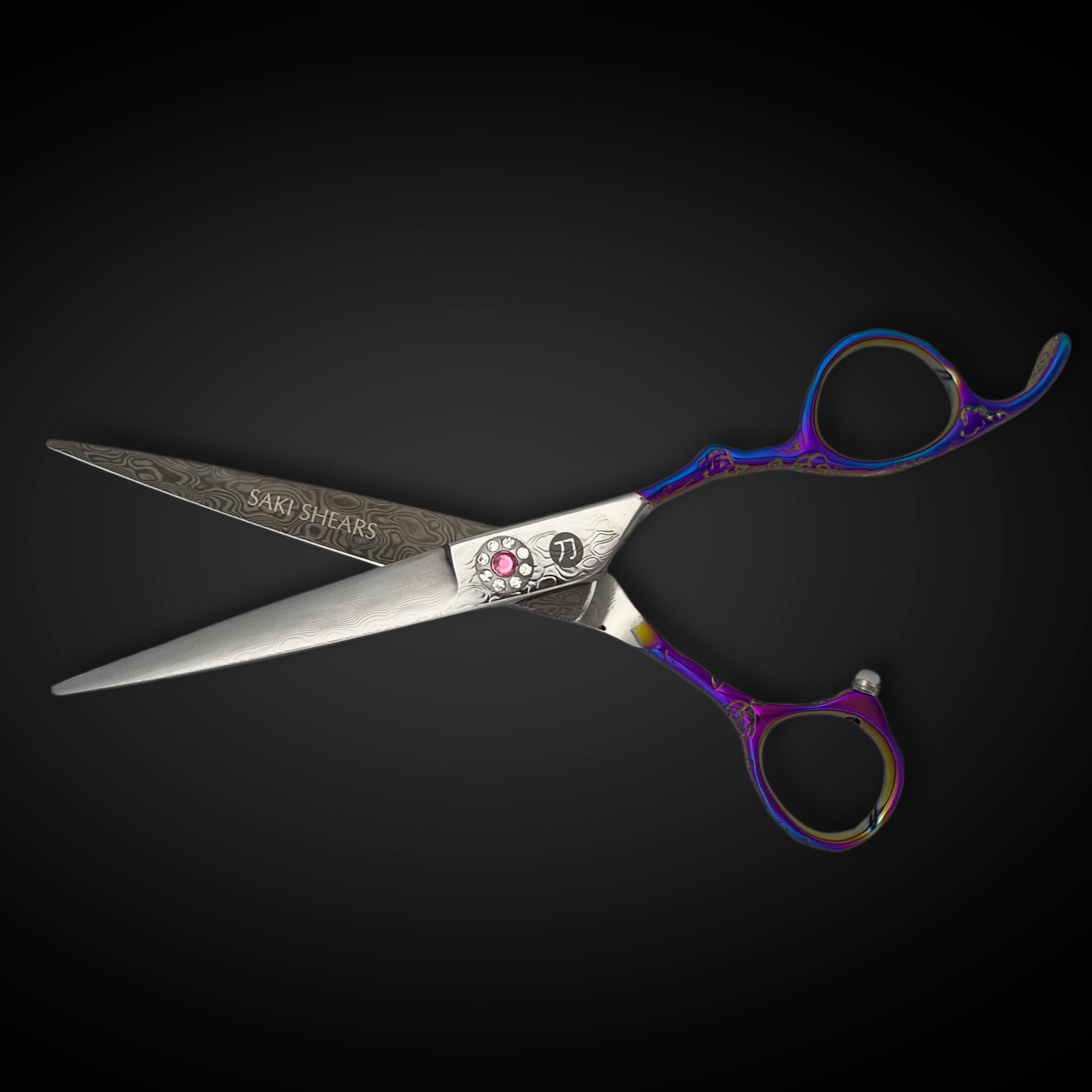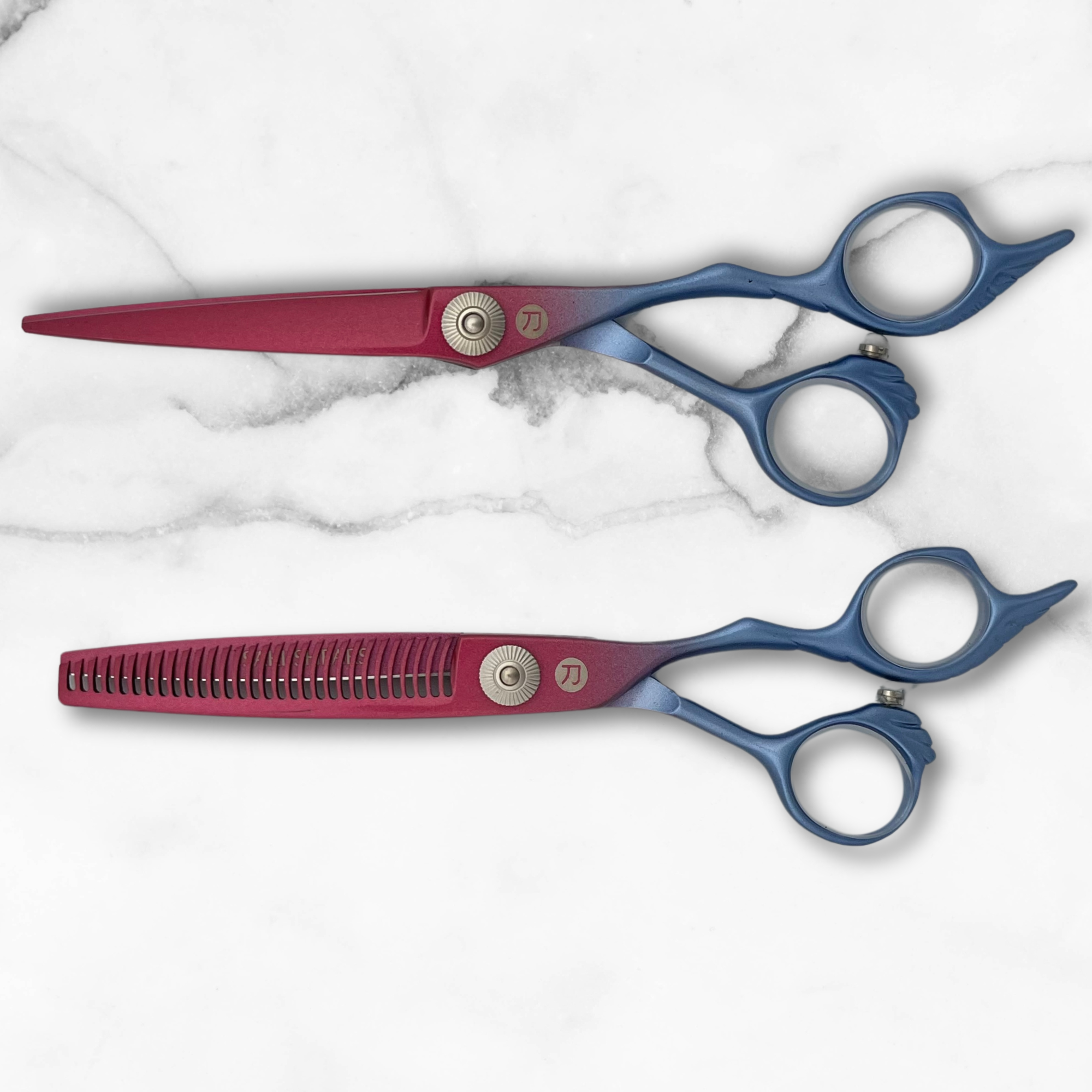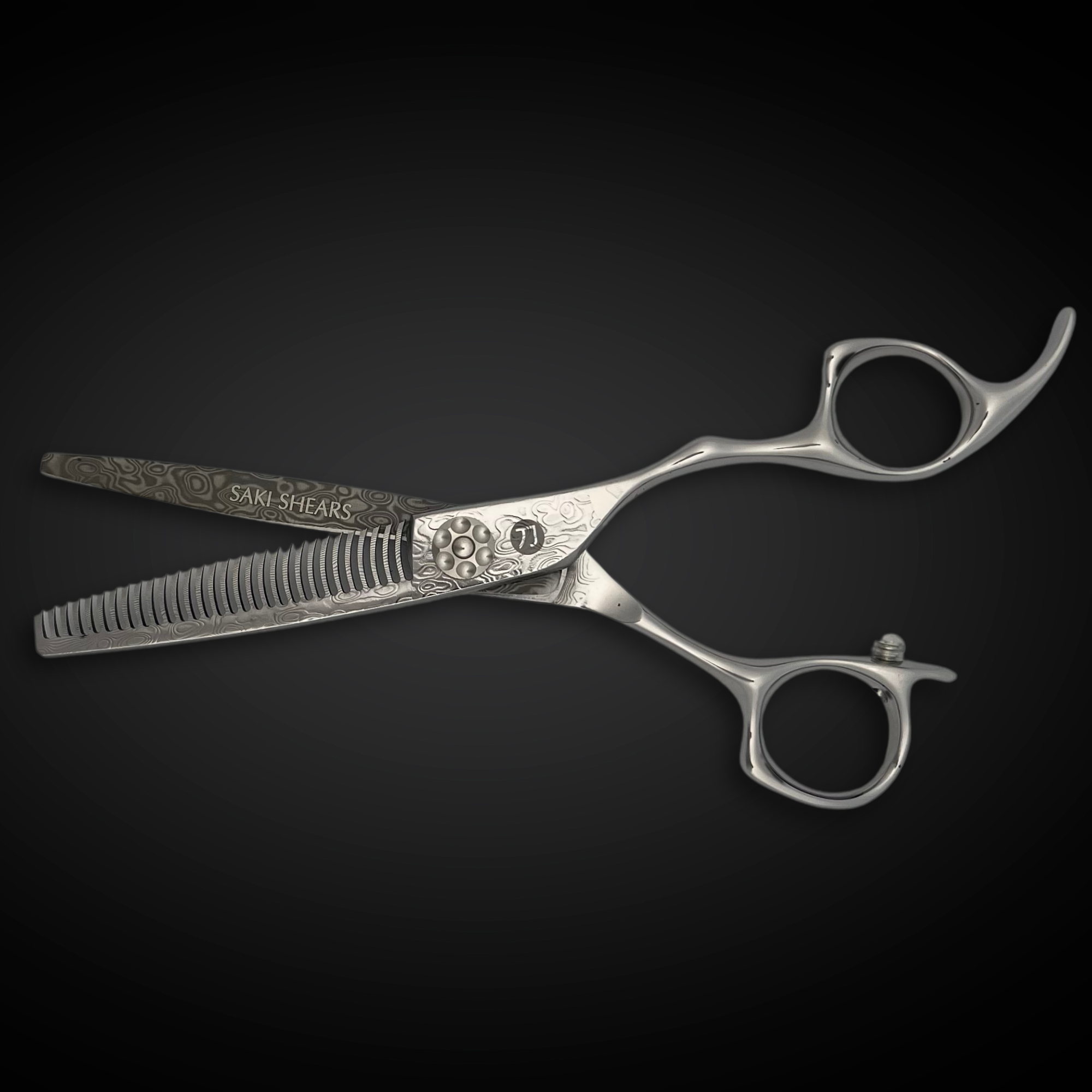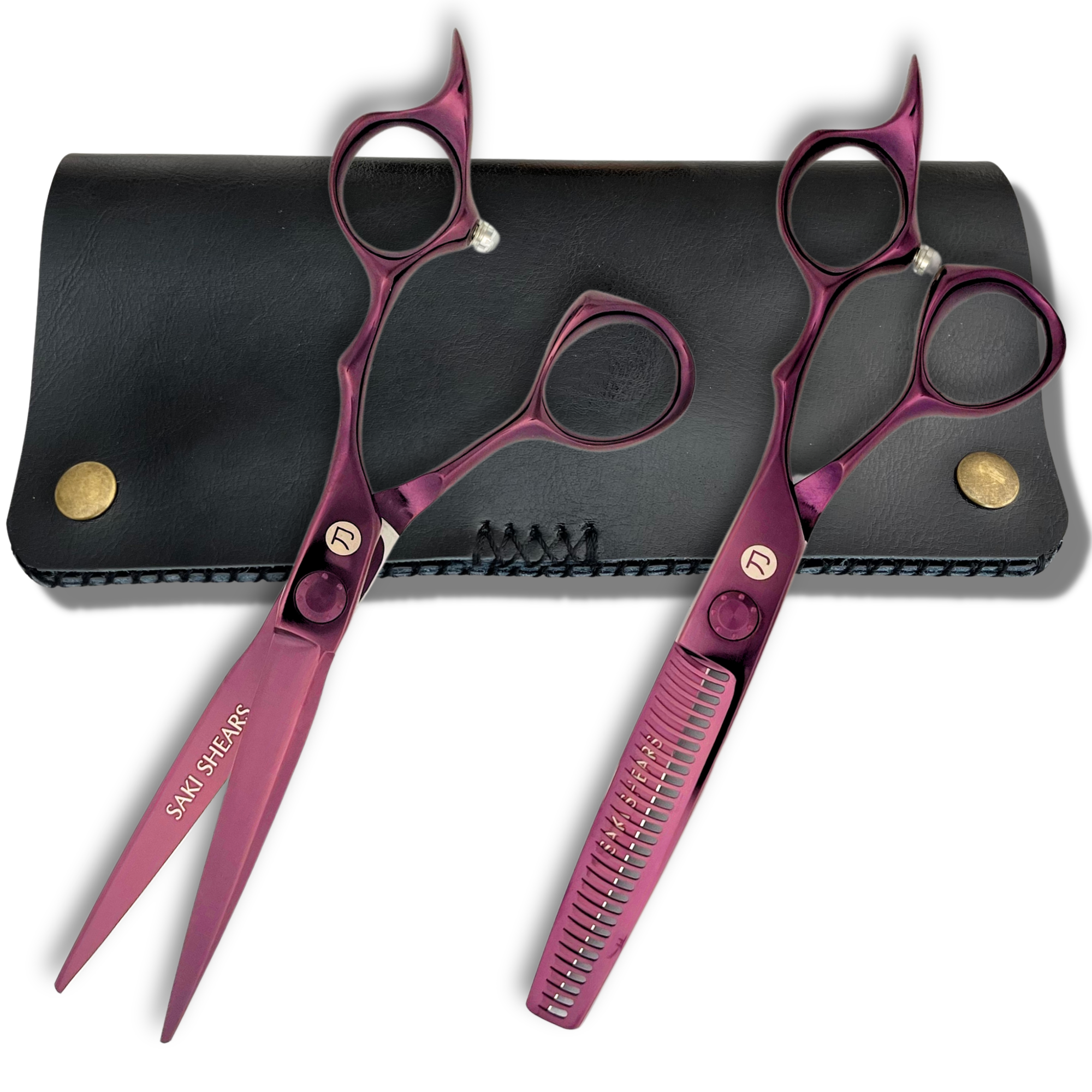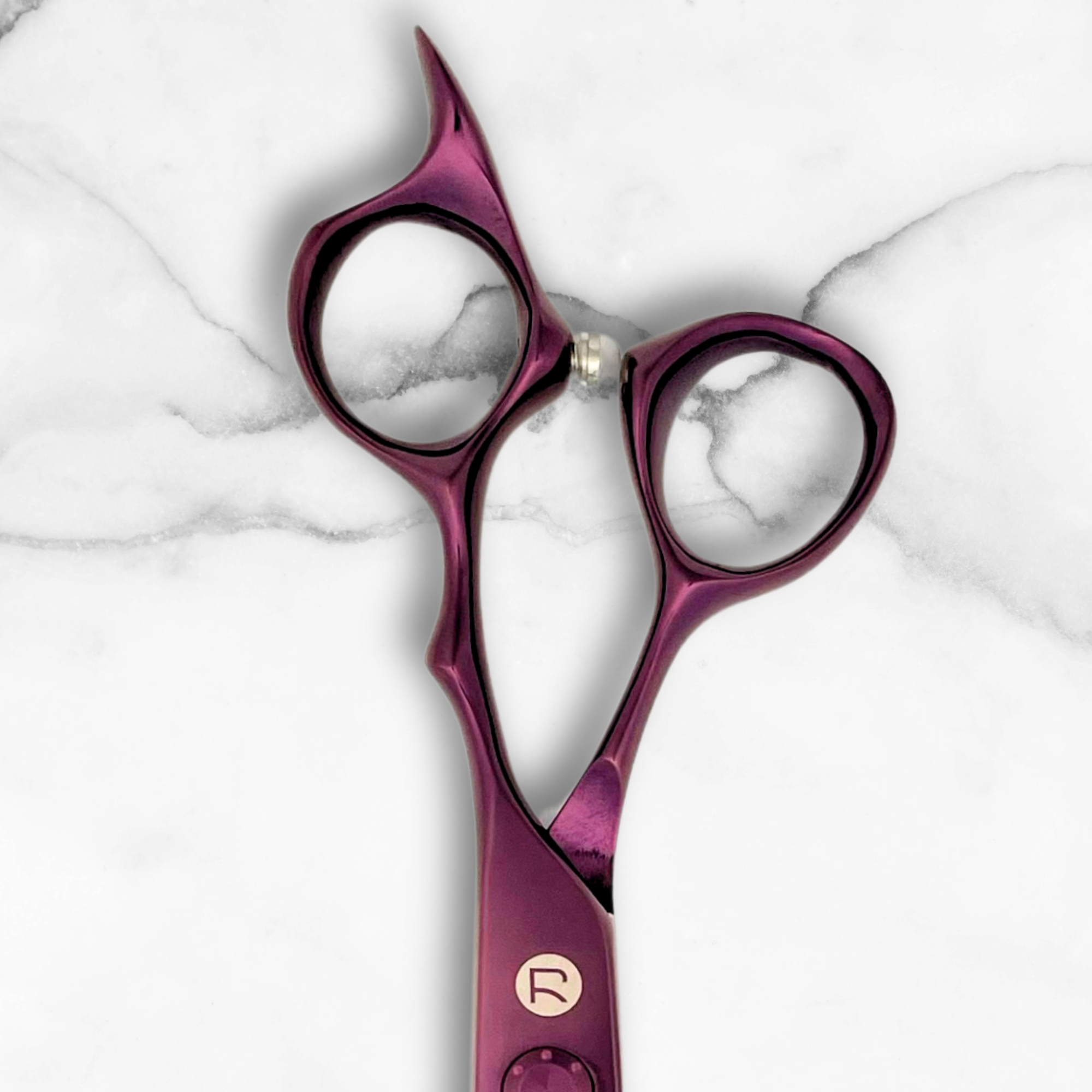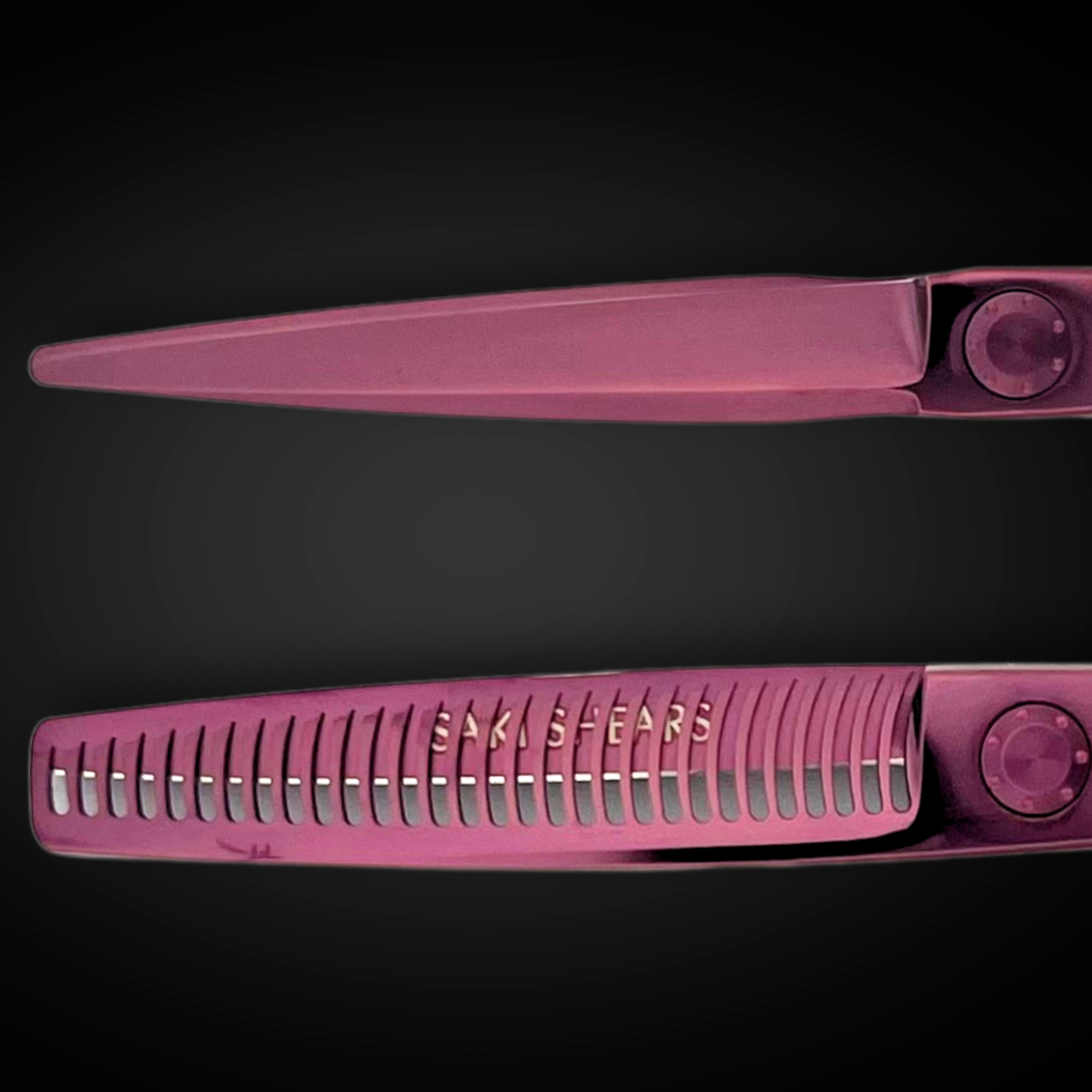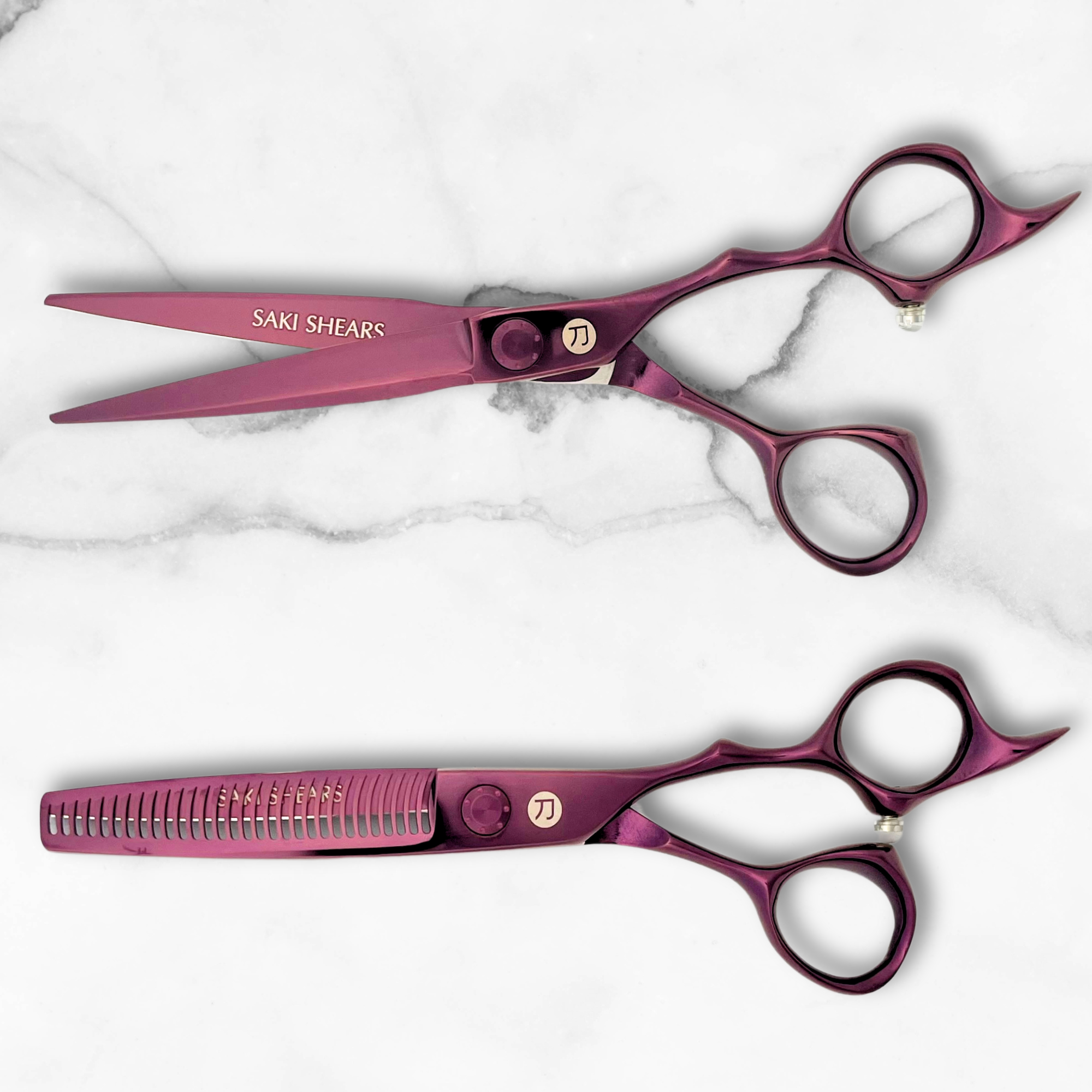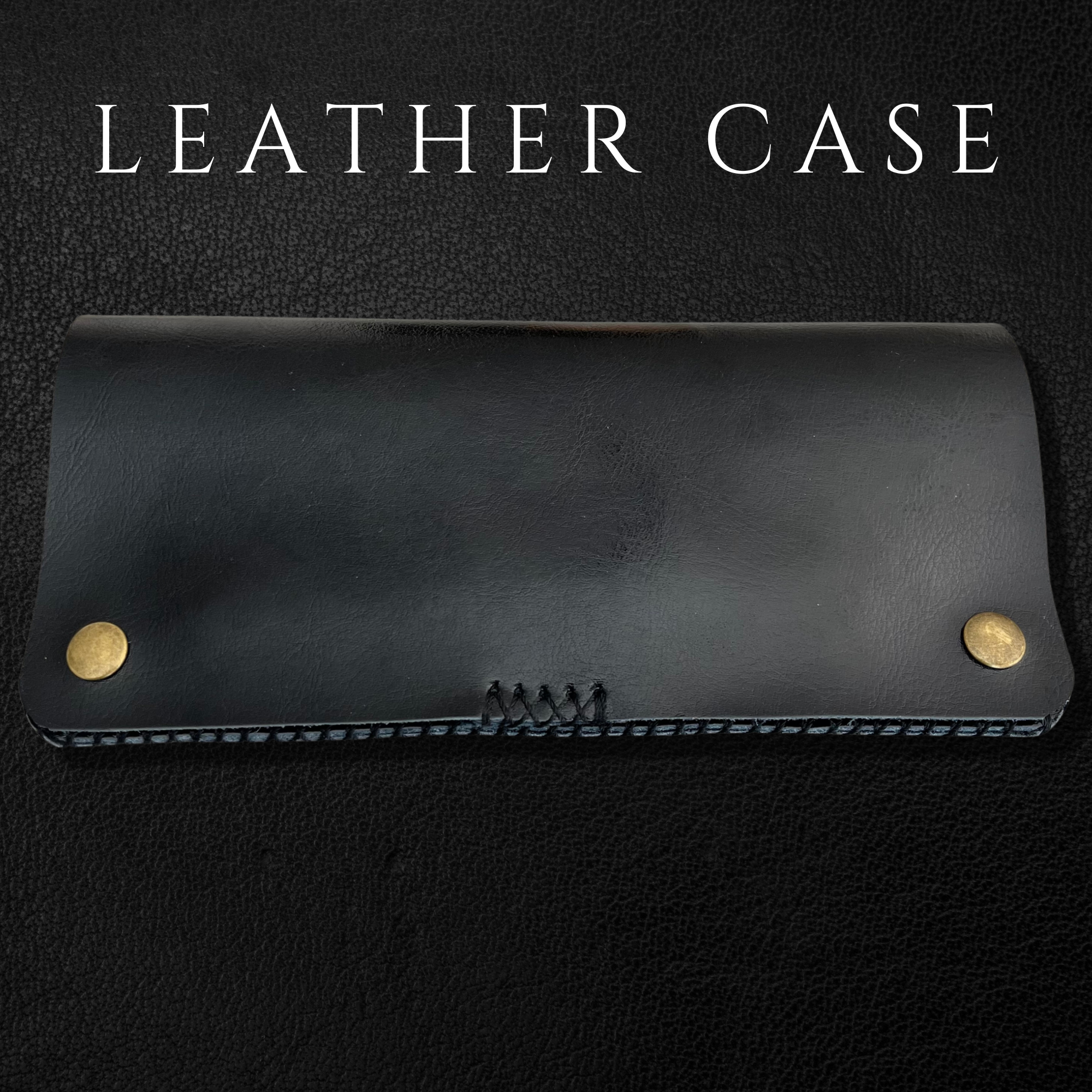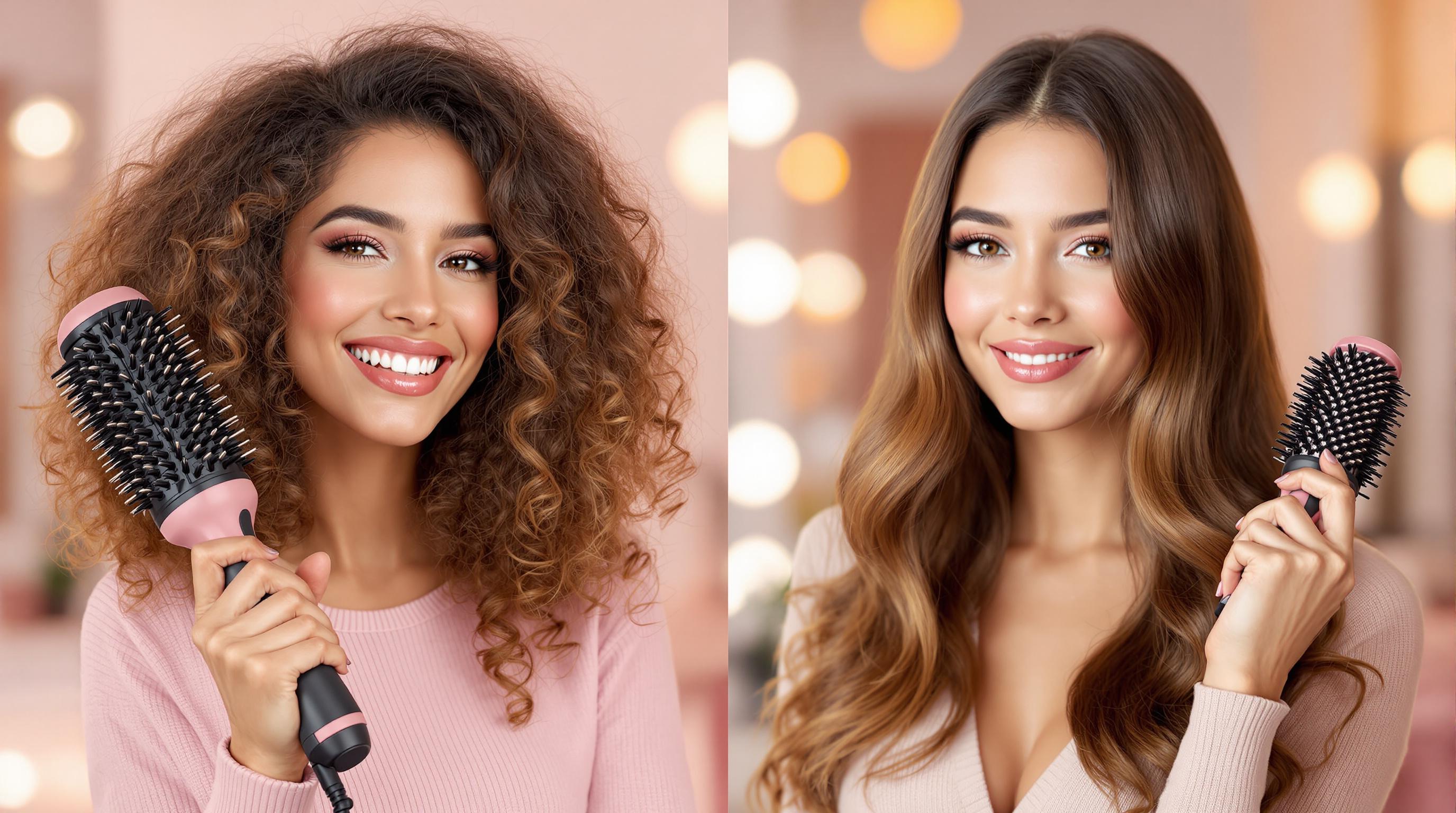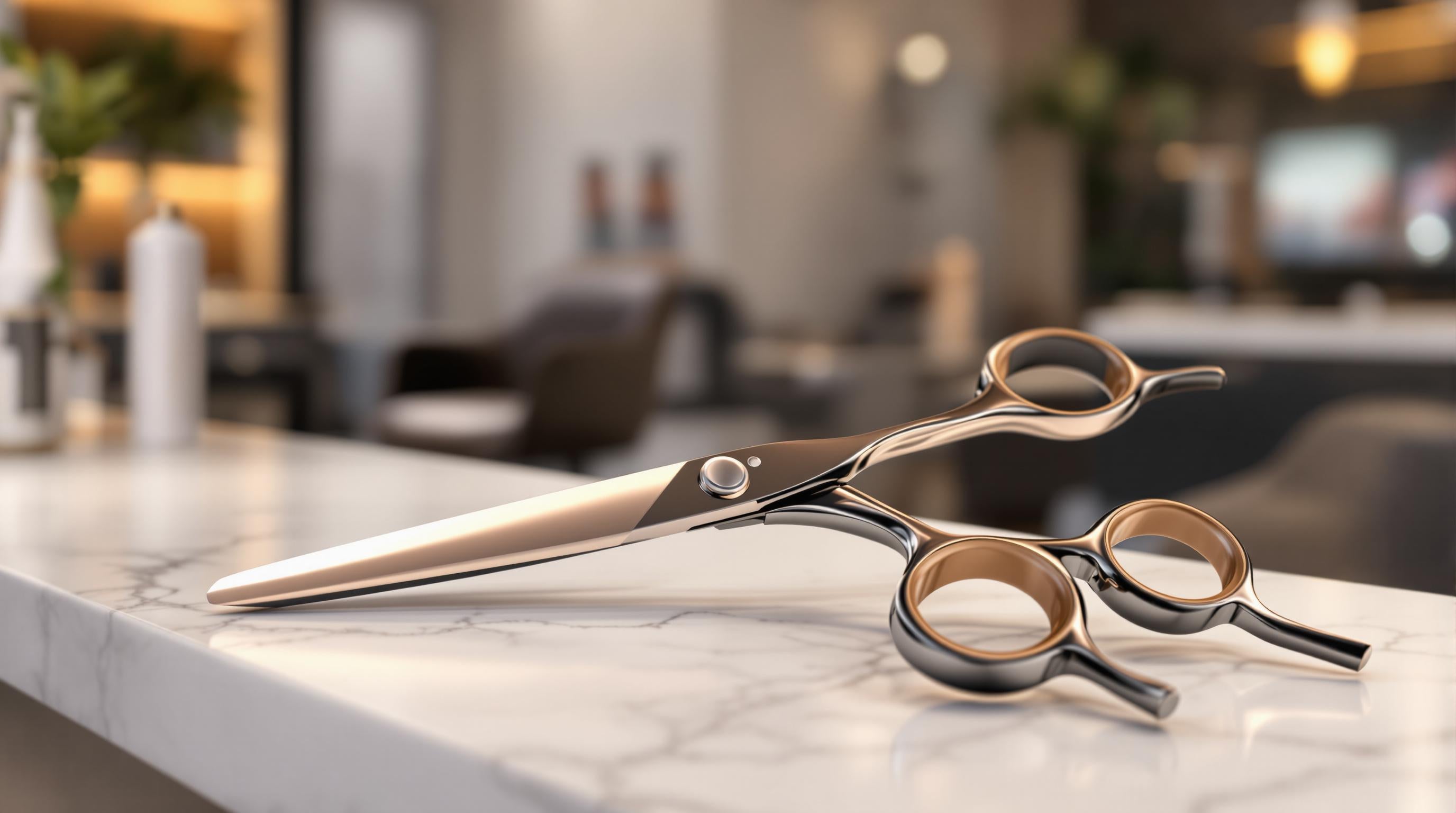Small vs. Large Ceramic Round Brushes: Which One Is Right for Your Hair Goals?
Choosing the right ceramic round brush depends on your hair length, type, and styling goals. Here's a quick breakdown:
- Small Brushes (1-1.5 inches): Ideal for short hair, bangs, or creating tight curls. Great for precise styling and adding root volume.
- Large Brushes (1.25+ inches): Perfect for medium to long hair. Best for smoothing, straightening, and creating loose waves.
Key Factors to Consider:
- Short Hair: Use smaller brushes for control and precision.
- Long Hair: Larger brushes speed up drying and create smooth finishes.
- Fine Hair: Opt for natural bristles to minimize breakage.
- Thick Hair: Mixed bristles provide better grip and control.
Quick Comparison Table:
| Brush Size | Best For | Hair Length | Benefits |
|---|---|---|---|
| Small (1-1.5") | Tight curls, root volume | Short to medium | Precision, detailed styling |
| Large (1.25"+) | Loose waves, smoothing, speed | Medium to long | Faster drying, sleek styles |
For best results, consider owning both sizes to handle different sections and styles. Proper tension and technique are key to achieving salon-like results at home.
Differences Between Small and Large Ceramic Round Brushes
Small Brushes: Precision and Control
Small ceramic round brushes (1-1.5 inches) are ideal for detailed styling tasks. They're great for short hair, bangs, or creating tight curls. These brushes allow for precise control near the scalp, making them perfect for lifting roots and adding volume to shorter hairstyles. Brushes with a mix of natural and synthetic bristles work well here, as they provide a good grip and reduce breakage. This makes them especially useful for curly or wavy hair, where extra control is often needed during styling.
Large Brushes: Speed and Volume
Large ceramic round brushes (1.25 inches or larger) are built for styling longer hair. With their bigger surface area, they distribute heat evenly and make the styling process quicker. These brushes are a go-to for achieving smooth, straight looks or a salon-quality blowout. For example, a 45mm ceramic brush can create loose waves while adding noticeable volume to long hair. Their size and efficiency make them a favorite for smoothing and straightening.
"The larger the brush, the straighter the hair and the faster your blowdry. Tension is the most important part of a good blow-out" [1]
| Brush Size | Best For | Ideal Hair Length | Primary Benefits |
|---|---|---|---|
| Small (1-1.5 inches) | Tight curls, bangs, detailed styling | Short to medium | Precision, root lift |
| Large (1.25+ inches) | Loose waves, smoothing, straightening | Medium to long | Faster drying, added volume, smooth finish |
Choosing the right brush size depends on your hair type and styling goals. Small brushes are perfect for precision and detailed work, while large brushes deliver speed and volume for longer styles. Matching the brush to your hair needs is key to getting the results you want.
Large Round Brush Vs. Medium Round Brush
Choosing a Brush Size: Key Factors
Selecting the right brush size depends on your hair type, length, and what you want to achieve with your styling.
For short hair, smaller brushes (17-23mm) are ideal for adding lift at the roots and precise styling. If you have medium to long hair, larger brushes (32-43mm) are better for quicker styling and smoother finishes. Fine hair benefits from natural bristles to minimize breakage, while thick or coarse hair does well with larger brushes featuring mixed bristles for better control and even oil distribution.
Here's a quick guide to match brush sizes with styling goals:
| Styling Goal | Recommended Brush Size | Why It Works |
|---|---|---|
| Tight Curls & Definition | 17-23mm | Perfect for creating well-defined curls |
| Root Volume | 23-32mm | Lifts hair at the scalp effectively |
| Loose Waves | 32-43mm | Adds natural movement to your style |
| Sleek Straight Styles | 43mm+ | Helps achieve a smooth, polished look |
When choosing a brush, think about its design and weight. A lightweight handle makes a big difference during extended styling sessions [3]. For flexibility, many stylists suggest owning two brushes: a smaller one for detailed work and root lifting, and a larger one for general styling and smoothing. This setup gives you the ability to adjust your technique for different sections of hair and achieve your desired look.
sbb-itb-337cfe6
Using Ceramic Round Brushes: Best Practices
Tension and Technique Mastery
Getting the right tension is crucial for achieving professional-looking results. To add volume, apply firm tension at the roots while lifting the brush upward. For smoothing, use lighter tension and focus on smaller sections of hair. Keep the pressure steady to avoid damaging the strands.
An ergonomic handle can make a big difference, especially during longer styling sessions where hand fatigue might affect your technique [1]. Once you’ve nailed the tension, combining it with effective heat styling methods will take your results to the next level.
Heat Styling Tips with Ceramic Brushes
Ceramic round brushes are perfect for blow-drying because they distribute heat evenly. Smaller brushes require more precision, while larger ones are better for speeding up the process, especially with longer hair.
| Heat Styling Element | Small Brush (17-23mm) | Large Brush (32-43mm+) |
|---|---|---|
| Airflow Direction | Angle downward | Keep parallel to the hair shaft |
| Section Size | Thin sections for precision | Medium to thick sections |
| Temperature Setting | Medium to high for tight curls | Medium for smooth results |
For the best results, start with damp - not soaking wet - hair to minimize heat damage [1]. Thanks to their ceramic coating, these brushes spread heat evenly, and the ionic bristles help reduce static while adding shine [3].
Work methodically through your hair, ensuring each section is fully dried before moving on to the next. If you have thick or coarse hair, take advantage of the brush's ventilated barrel. The larger holes improve airflow, making the drying process more efficient [1][3].
Comparison Table: Small vs. Large Ceramic Round Brushes
Brush size plays a big role in achieving different styling results. Here's a closer look:
| Feature | Small Ceramic Brush (17-23mm) | Large Ceramic Brush (32-43mm+) |
|---|---|---|
| Best Hair Length | Pixie cuts to chin-length hair | Shoulder-length and longer |
| Styling Goals | Tight curls, precise volume, bangs styling | Smoothing, straightening, big waves |
| Section Size | Thin sections for detailed work | Medium to thick sections |
| Drying Time | Longer due to smaller sections | Faster, especially for long hair |
| Volume Control | Focused volume at roots | Overall body and movement |
| Curl Definition | Tighter, more defined curls | Loose waves and soft bends |
| Precision Level | Great for short layers | Ideal for smoothing larger areas |
| Tension Control | Easier to handle with short hair | Adds tension for sleek finishes |
Both sizes improve shine thanks to natural bristles, but the level of tension depends on the brush size. Tension is critical for professional-looking results [1].
| Hair Type/Goal | Recommended Brush Size | Key Benefit |
|---|---|---|
| Short Bangs | 17-23mm | Perfect for detailed styling |
| Bob Cuts | 23-32mm | Balances control and volume |
| Long Layers | 43-55mm | Quick smoothing and added movement |
| Thick Hair | 32-43mm | Better airflow and easier handling |
Larger brushes speed up drying with better ventilation, while smaller brushes offer precise heat focus for detailed styling [2][3].
Conclusion: Selecting the Right Brush for Your Hair
Choosing the right brush starts with your hair length: smaller brushes are perfect for shorter styles, while larger ones work best for longer hair. Your styling goals also play a role - smaller brushes are great for achieving tight curls or adding volume at the roots, whereas larger brushes help create sleek looks and loose waves [1].
Your hair type is another important factor. Natural bristles are suitable for most hair textures, but synthetic bristles are often better for thick or coarse hair [2]. Experts often recommend trusted brands like Olivia Garden and Moroccan Oil for achieving the best results [1].
Brush size affects how efficiently you can style your hair. Larger brushes speed up drying time and improve airflow, while smaller brushes allow for more precise styling [2]. When deciding, think about both your current styling needs and how you want to maintain your hair over time.
FAQs
Is a bigger or smaller round brush better?
It mostly depends on your hair length and what style you're aiming for. Smaller brushes (17-23mm) are great for short hair and detailed styling. On the other hand, larger brushes (32-43mm) work well for longer hair, helping to create smooth, flowing looks [1].
How do I choose the right round brush?
Think about your hair length, the style you want, and the bristle type. For shorter hair, go with smaller brushes, while longer hair benefits from larger barrels. Natural boar bristles are gentle and work well for most hair types, whereas synthetic bristles are better suited for thick or coarse hair. Having both small and large brushes on hand gives you flexibility for a variety of styles [2].
Smaller brushes are ideal for tighter curls and precise volume, while larger ones help create loose waves or sleek, straight looks [1] [2].
"Tension is key to a good blow-out. Choose brushes that provide strong tension without damaging the hair."
With this knowledge, you can pick the perfect brush to match your hair type and styling goals.

